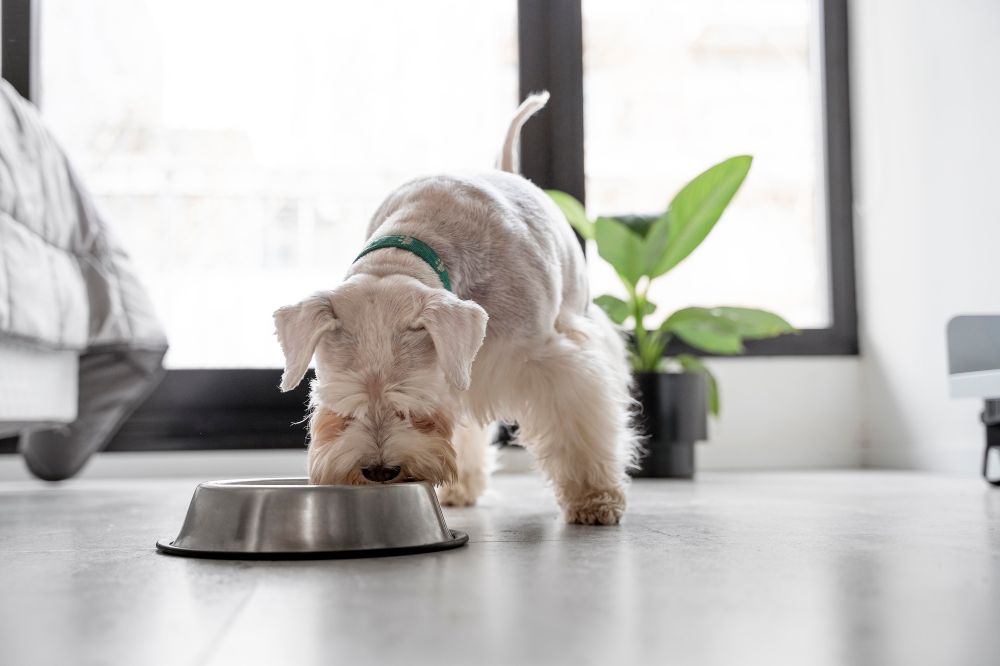As a dog owner, your top priority is likely to provide your furry friend with the best nutrition possible to let your pet thrive. Unfortunately, the number of pet food choices available in stores can make it challenging to know what’s right for your four-legged friend.
When it comes to selecting dog food, a common concern is – should you choose raw food or kibble? While this decision might seem tricky, understanding the pros and cons of each type can guide you towards an informed choice.

Raw Food Diet
A raw food diet, also known as the “BARF diet” (Biologically Appropriate Raw Food), is a dietary approach that involves consuming predominantly uncooked and unprocessed foods. The concept behind this diet is to mimic the natural diet that dogs would have eaten in the wild.
If you want to buy raw dog food online, choose a reputable brand that offers recipes made without added processes. Explore the different recipes offered by the company and take the time to find one that your four-legged companion enjoys.
Benefits of a Raw Food Diet
- Improved digestion: Raw food is rich in natural enzymes and fewer carbohydrates, which can lead to better digestion and firmer stools.
- Enhanced coat and skin: Many raw food feeders report that their dogs’ coats become shinier and skin conditions improve.
- Dental health: Chewing on raw bones can help clean teeth and reduce tartar buildup.
- Allergies and sensitivities: A raw diet may offer relief to certain dogs suffering from food allergies or sensitivities, particularly those intolerant to specific ingredients found in traditional kibble.
Considerations of a Raw Food Diet
- Bacterial contamination: Raw meat may sometimes contain bacteria like salmonella and E. coli, posing potential risks to both your dog and your household members. But you can minimize these risks by purchasing raw food from a reputable brand and practicing proper handling and storage.
- Nutritional balance: Creating a balanced raw diet requires careful planning to ensure your dog gets all the necessary nutrients. You may need to supplement specific vitamins and minerals.
Kibble Diet
Kibble, known as dry dog food, has been the standard dog diet for many decades. It is widely available, convenient, and comes in various formulations tailored to different breeds and life stages.
Benefits of a Kibble Diet
- Convenience: Kibble offers convenience for busy pet owners as it is effortless to store, serve, and measure.
- Nutritional consistency: Some of the commercially produced kibble is created to meet the dietary requirements of dogs, potentially offering a balanced diet.
- Dental health: Some kibble varieties are designed to promote dental health by reducing tartar and plaque buildup.
Considerations of a Kibble Diet
- Processing and additives: During the manufacturing process of kibble, high-temperature cooking can lead to the loss of certain natural nutrients. Kibble may also contain preservatives and additives that might not be suitable for every dog. So, it can be helpful to familiarize yourself with the ingredients on the labels and identify potentially problematic ingredients.
- Allergies and sensitivities: Certain dogs might experience allergies or sensitivities to certain ingredients commonly found in kibble, like grains or artificial additives.
- There have been some recalls to kibble due to salmonella bacteria, and pet owners are being urged to avoid feeding their animals certain kibble products.
Finding the Right Balance
After comparing a raw and kibble diet, the final choice depends on your dog’s unique needs. Selecting the perfect food for your dog requires a personalized approach, taking into account factors like your pet’s age, breed, activity level, and health conditions.






